Persimmon Red Glaze: Rust, Frost, and Metallic Fire
Among the wide variety of Jian Zhan glazes left from the Song dynasty, in addition to the well-known Hare’s Fur and Black Gold bowls, one should not overlook the quiet allure of the Persimmon Red Glaze (Shihong You, 柿红釉). Sometimes referred to interchangeably with vermilion or zhusha red (朱砂红), this glaze exhibits a warm, earthy palette—often mixed with purplish-black hues and subtle crystalline effects.

What Is Persimmon Red?
As its name suggests, the base tone is similar to the skin of ripe persimmons: a reddish-orange with subtle depth. But what makes Shihong glaze truly fascinating is that the surface often features dark iron “rust” spots and a faint metallic sheen—a phenomenon sometimes enhanced by the presence of manganese oxides in the glaze mixture.
The bottom of such bowls may shift toward black-blue, occasionally adorned with traces of hare’s fur-like streaks. However, if the surface appears dry and matte, lacking luster, it may indicate overfiring, a condition where the glaze becomes dull and chalky—a sign of excessive heat or imprecise firing control.
How Is Persimmon Red Glaze Formed?
The formation of this glaze depends heavily on two factors: temperature and iron content in the glaze.
🔥 1. Low Firing Temperature (~1200°C)
In traditional dragon kilns, temperature control was notoriously difficult. Only certain areas of the kiln could reliably reach 1200°C, while cooler zones might produce unexpected variations—yellows, greens, or muted reds. In zones where optimal reduction atmosphere occurred at ~1200°C, iron oxides within the glaze could partially reduce, forming Fe₃O₄ (magnetite) from Fe₂O₃ (hematite), leading to metallic red or purple hues.

🧪 2. Iron Oxide Content and Crystallization
Iron oxides are the primary coloring agents in black-glazed Jian Zhan. When Fe₂O₃ content exceeds 4%, the glaze tends to produce dark, intense colors—from purple to brown to black—especially under a strong reduction atmosphere. With the presence of hematite and magnetite crystals in the glaze, the surface gains a subtle metallic sheen, reminiscent of polished lacquer.
If, however, the iron oxide content is below 3%, the resulting glaze appears lighter, in shades of yellow, green, or pale blue.
Signs of Overfiring or Incomplete Reduction
There are generally two main reasons for the emergence of Persimmon Red glaze:
-
Overfiring – Excessive heat causes too many crystallized patterns to form, overwhelming the base glaze tone. A key indicator is the presence of a silver-frost shimmer (银霜) on the exterior wall of the bowl, a hallmark of high-temperature reaction.
-
Weak reduction or low Fe₂O₃ content – If the kiln atmosphere does not sufficiently reduce the iron oxides, or if the body lacks iron-rich clay, the result will be duller reds or yellows, and the metallic luster may be lost.
A Forgotten Beauty Reborn
Although Shihong You bowls were less celebrated in ancient texts than yaobian or hare’s fur, modern collectors and ceramic artists are rediscovering their charm. The interplay of rust spots, red glaze, and subtle luster creates a wabi-sabi harmony—one that quietly reflects the chaos of fire and time.

Further Reading / Linking Suggestion
You can optionally include internal links like:
-
Learn more about Wujin (Black Gold) Glaze
-
Discover the legendary Oil Spot Jian Zhan
Or external citations like:
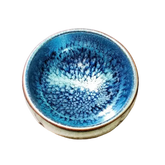


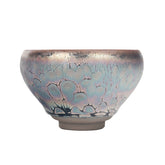
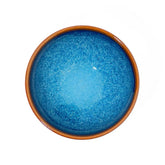
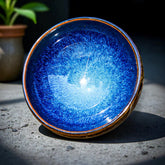
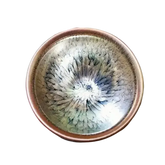
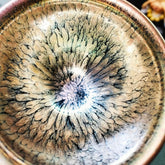
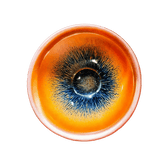

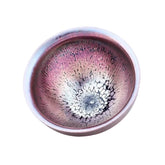


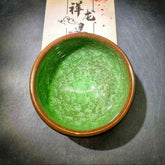
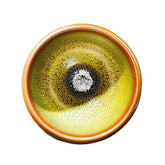
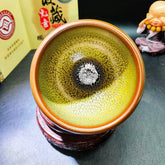
Leave a comment
Please note, comments need to be approved before they are published.